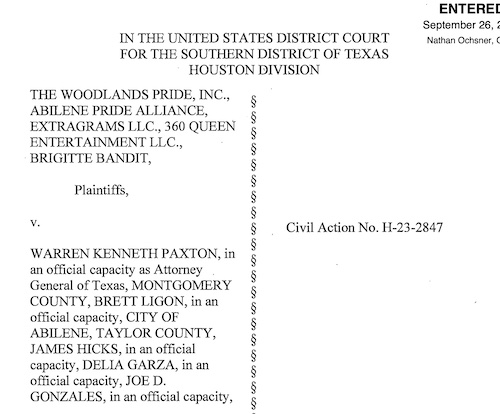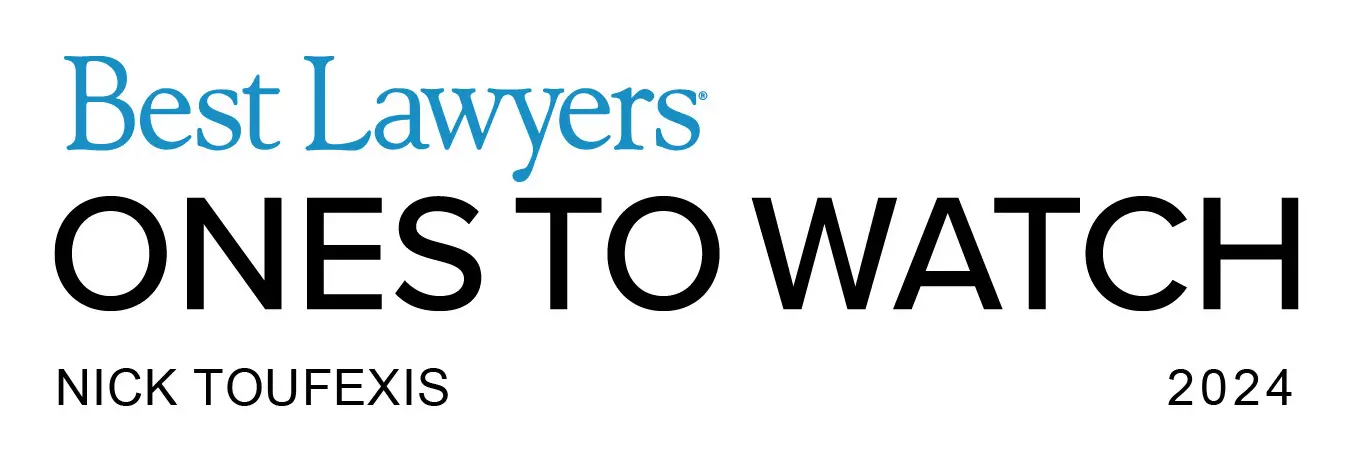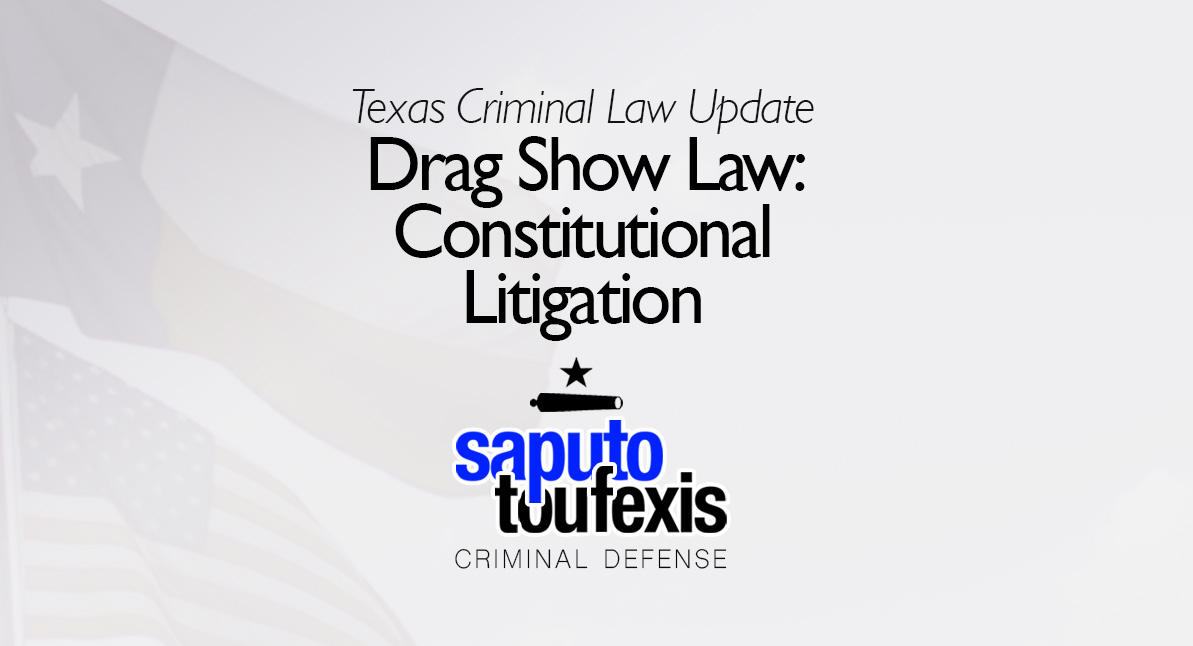A federal judge in the Southern District of Texas just held the new Texas drag show law unconstitutional and issued a permanent injunction, preventing the state of Texas from enforcing this law.
Unless the Fifth Circuit issues a stay, the injunction will take effect immediately.
The new law, called Certain Sexually Oriented Performances Prohibited, was effective beginning on September 1, 2023. It was passed in the 88th Legislature in a bill called SB 12 in an effort to prohibit drag show performances in places where minors might see them. But, as I wrote about before, the law was extremely vague and applied even to dancing in sexy clothes.
The court concluded that “S.B. 12 violates the First Amendment as incorporated to Texas by the Fourteenth Amendment of the United States Constitution” and ordered that Ken Paxton, Montgomery County, the City of Abilene, Taylor County, and others were “immediately enjoined from enforcing S.B. 12.”

The court concluded as a matter of law that drag performances are expressive content that is afforded First Amendment protection. Drag shows express a litany of emotions and purposes, from humor and pure entertainment to social commentary on gender roles. “There is no doubt that at the bare minimum these performances are meant to be a form of art that is meant to entertain, alone this would warrant some level ofFirst Amendment protection.” See The Woodlands Pride, Inc. et al v. Paxton et al, p.37.
And under the First Amendment, the court reminded us that the government has no power to restrict expression because ·of its message, its ideas, its subject matter, or its content and that all cntent-based laws – those that target speech based on its communicative content – are presumptively unconstitutional and may be justified only if the government proves they are narrowly tailored to serve compelling state interests. This is, of course, well-established case law.
A regulation of speech is content based if a law applies to a particular speech because of the topic discussed or the idea or message expressed and requires a court to consider whether a regulation of speech ‘on its face’ draws distinctions based on the message a speaker conveys. Content-based regulations must satisfy strict scrutiny, and to survive strict scrutiny, the government must prove that the restriction furthers a compelling interest and is narrowly tailored to achieve that interest. If a less restrictive alternative would serve the government’s purpose, the legislature must use that alternative. This is all also well-established law.
The court concluded that “S.B. 12 targets the content of speech, some of which do not rise to the definition of obscenity” and accordingly, classified the law as a content-based restriction, subject to strict scrutiny.
The court then found that the law was not narrowly tailored in its purpose to protect children, and was thus not narrowly tailored to promote a compelling state interest.
The court also concluded that the law was illegal viewpoint discrimination and, based on the above analysis, failed strict scrutiny for that reason as well. In addition, the court found that the law was unconstitutionally overbroad, unconstitutionally vague, and an impermissible prior restraint. Basically, the court concluded that this law fails on every possible constitutional measure.









